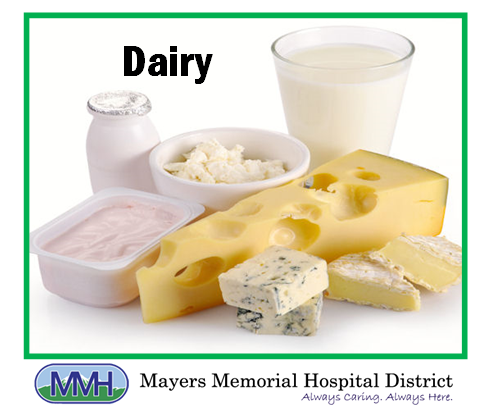Eating right is one way you can help control the risk of heart disease. Although changing your eating habits can be hard, there are a few simple tips that can help get you started.
Portion Size
How much you eat is just as important as what you eat. Overeating results in extra calories, fat and cholesterol. Try to measure and keep track of your portions. Eating more low calorie, nutrient rich foods like fruits and vegetables can help fill you up and keep you from overdoing other portions.
Eat More Fruits and Vegetables
Vegetables and fruits are good sources of vitamins and minerals and are also loaded with fiber and are low in calories. Making more choices from this food group may help keep you away from other high fat choices. Make it easier by washing a prepping fruits and vegetables and having them handy for a meal or snack.
Include Whole Grains
Whole grains are also a good source of fiber and other nutrients that play a role in regulating blood pressure and heart health. Try a variety such as couscous, quinoa or barley. Another way to get some whole grains in your diet is flaxseed. Try grinding the seeds and adding to yogurt, applesauce or cereal. Try to limit refined flours, products made with white flours and snack foods such as cakes, pies, high fat crackers, etc.
Limit Unhealthy Fats and Cholesterol
Limiting saturated fats and trans fats is an important step in reducing your blood cholesterol and lowering your risk of coronary artery disease. A high blood cholesterol level can lead to build up of plaques in your arteries, which can lead to heart attack and stroke. The most effective way to limit these fats is to limit your intake of solid fats (butter, margarine, shortening) You can also choose lean meats, trim fat and use low fat substitutes whenever possible. Choose monounsaturated fats such as olive oil or canola oil.
Low Fat Protein
Lean meat, poultry, fish, low fat dairy and egg whites are great sources of low fat protein. Certain fish choices are rich in omega-3's which can lower blood fats. Other sources of omega-3's are walnuts, soybeans, canola and flaxseed. Beans, peas and lentils are also a good source of low fat protein. Try top avoid processed meats such as hot dogs and cold cuts, fried or breaded meats, high fat dairy and organ meats.
Reduce Your Sodium Intake
Eating too much sodium can contribute to high blood pressure. Reducing sodium is an important part of a heart healthy diet. It is recommended by the USDA that healthy adults have no more than 2300 milligrams of sodium per day (1 teaspoon). People age 51 or older, African-Americans and those with high blood pressure, diabetes or kidney disease should only have 1500 milligrams per day. One way to decrease your sodium is to avoid processed foods.
Plan Ahead
Planning allows you ta make healthy choices, avoid eating out and eating too much processed or fast food. Try creating menus, grocery lists and sticking to them.
Allow a Treat Once in a While
A treat every once in awhile won't hurt. Just don't use it for an excuse to get of track permanently.

























